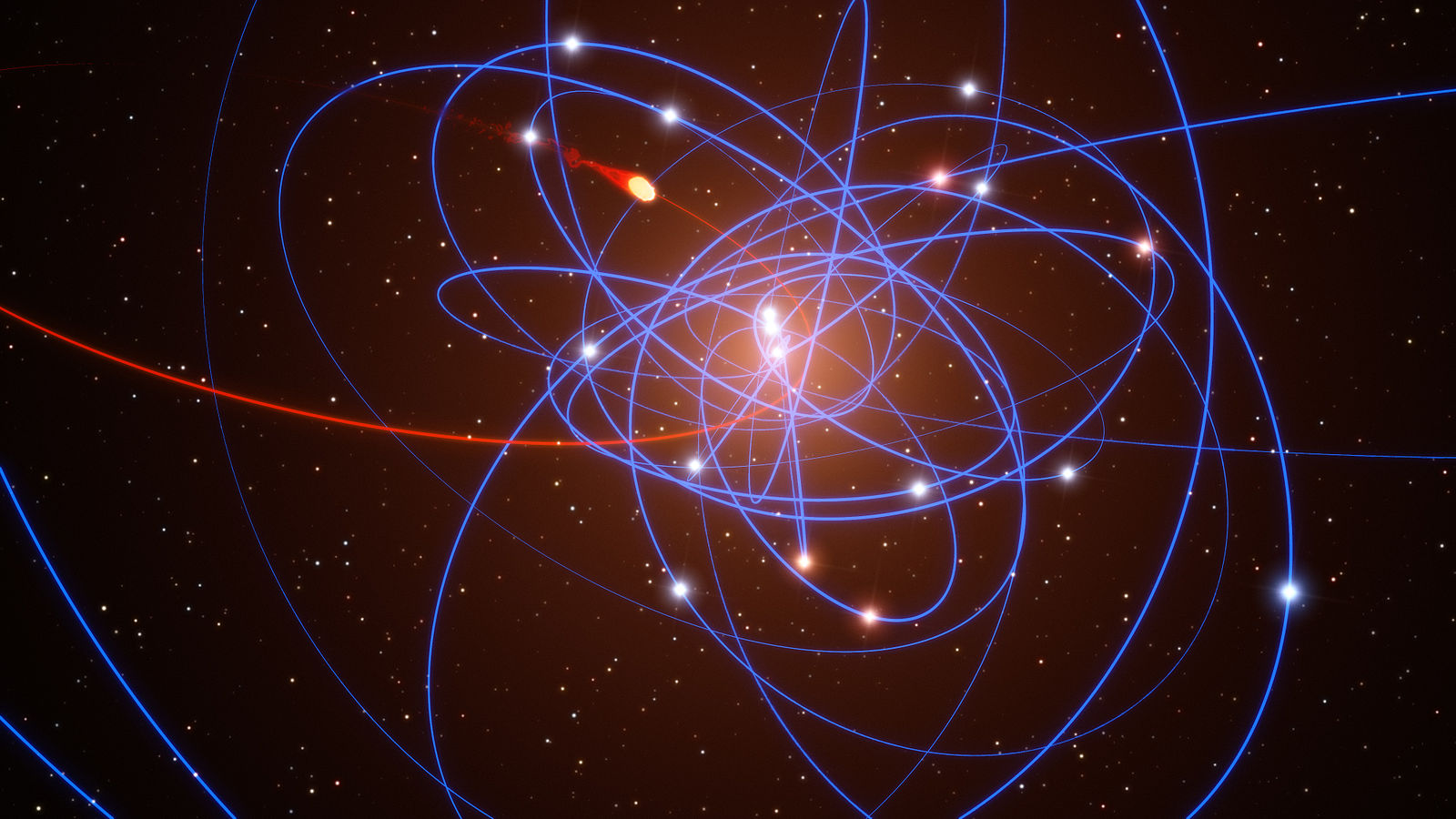Black Holes and Nobel Prizes!

supermassive black hole at the centre of the Milky Way.
Credit: ESO
On the 6th October the Nobel Prize for Physics 2020 was announced by the Royal Swedish Academy of Sciences.
The prize this year went to a trio of physicists for their work on black holes.
British mathematical physicist, Sir Roger Penrose, was award half of the prize money (5 million Swedish Kroner) for his work on black hole formation. Sir Roger used complicated models to prove that black holes could form naturally when a massive star collapses. It was the first time that someone modelled black hole formation which worked with Einstein's general theory of relativity. His paper on this was first published in 1965. Throughout much of his career he worked with Stephen Hawking exploring the theory around black holes.
The prize was shared with Reinhard Genzel from Germany and Andrea Ghez from the USA. They discovered the supermassive black hole in the centre of our own galaxy, the Milky Way. The discovery was made by turning their telescopes to the centre of our galaxy and carefully plotting the motions of stars. The stars were all observed to be orbiting around an object which couldn't be seen. By finding the centre of mass of these orbits, and the velocities which the stars were moving, it was possible to work out that the object, although it could not be seen, was massive. The mass of 4 million Suns in a small physical space. Since this discovery, astronomers have found supermassive black holes in the centres of most galaxies.

